
Design Studies
Scope & Guideline
Catalyzing Multidisciplinary Dialogues in Design
Introduction
Aims and Scopes
- Interdisciplinary Design Research:
The journal emphasizes the integration of various disciplines in design research, encouraging insights from anthropology, psychology, sociology, and engineering to inform design practices. - User-Centric and Participatory Design:
A core focus is on involving users and stakeholders in the design process, highlighting methods such as co-design, participatory design, and user experience evaluation. - Sustainable and Ethical Design Practices:
Design Studies frequently explores sustainability and ethical considerations in design, addressing how design can contribute to social justice, environmental responsibility, and inclusivity. - Methodological Innovations in Design:
The journal showcases new methodologies and frameworks that enhance design research, including qualitative and quantitative approaches, as well as emerging technologies like AI and virtual reality. - Design Education and Pedagogy:
There is a consistent focus on the implications of design research for education, exploring how design thinking and practices can be integrated into teaching and learning.
Trending and Emerging
- Design for Social Justice:
There is a rising interest in how design can address social inequalities and promote justice, with authors exploring themes such as design anthropology and community engagement. - Integration of Technology in Design:
Papers increasingly focus on the role of technology, including AI and virtual reality, in enhancing design processes and outcomes, reflecting the digital transformation in the field. - Sustainable and Circular Design:
Research on sustainable design practices, including circular economy principles and eco-design, is gaining traction as global awareness of environmental issues increases. - Cognitive and Emotional Aspects of Design:
Emerging themes include the cognitive processes involved in design thinking and the emotional impact of design, indicating a deeper exploration of human-centered design principles. - Cross-Cultural and Global Design Practices:
The journal is emphasizing the importance of diverse cultural perspectives in design, showcasing research that addresses global challenges and incorporates plural voices.
Declining or Waning
- Traditional Design Methodologies:
There has been a noticeable reduction in papers focusing on conventional design methodologies, as the field increasingly embraces innovative and interdisciplinary approaches. - Product-Centric Design:
Research centered solely on product design without considering broader social implications or user involvement appears to be waning, reflecting a shift towards more holistic and user-inclusive perspectives. - Aesthetic-Only Focus:
Papers that emphasize aesthetics in isolation from functionality, usability, or social impact are becoming less common, as the discourse evolves towards more integrated design considerations. - Historical Design Analysis:
While historical perspectives are still valuable, there seems to be a decline in papers that focus exclusively on historical analysis without connecting to contemporary design practices or future implications. - Corporate Design Practices:
Research specifically focused on corporate design practices, particularly in isolation from social or environmental contexts, is decreasing as more emphasis is placed on design for social good.
Similar Journals
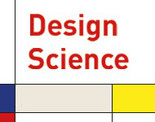
Design Science
Exploring the Intersection of Theory and Practice.Design Science, published by Cambridge University Press, is a premier open access journal that has established itself as a leading platform for innovative research in the interdisciplinary field of design. Since its inception in 2015, the journal has focused on integrating design theories with practical applications across various sectors, including engineering, visual arts, and simulation modeling. With a remarkable impact factor and high rankings in multiple categories—Rank #11/667 in Visual Arts and Performing Arts and Rank #79/307 in General Engineering—Design Science commands a prominent position, being ranked in the top 98th, 76th, and 74th percentiles within its respective fields according to Scopus. The journal's dedication to open access ensures that cutting-edge research is accessible to a global audience, fostering collaboration and dialogue among researchers, professionals, and students alike. This journal not only aims to advance the understanding of design sciences but also serves as a vital resource for those seeking to explore the evolving dynamics of design practice in a rapidly changing technological landscape.
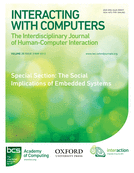
INTERACTING WITH COMPUTERS
Innovating Understanding in Human-Computer EngagementINTERACTING WITH COMPUTERS is a renowned journal published by Oxford University Press, focusing on the interdisciplinary field of Human-Computer Interaction, as well as aspects of Library and Information Sciences and Software. With a rich history of publication since 1989, this journal has established itself as a significant platform for scholars to disseminate cutting-edge research and innovative methodologies that enhance our understanding of how humans engage with technology. Despite being classified in the Q3 and Q2 quartiles across various categories, its 2023 Scopus rankings highlight its relevance, positioning it within the 69th percentile for Library and Information Sciences. This makes it an essential resource for researchers, professionals, and students looking to stay informed about the latest advancements and discussions in this rapidly evolving domain. Though not currently open access, INTERACTING WITH COMPUTERS offers substantial insights that are crucial for driving forward the conversation in Human-Computer Interaction, ensuring its relevance in both academic and applied contexts.

Journal of Visual Art and Design
Exploring the intersection of art and design.Journal of Visual Art and Design is a pivotal academic platform dedicated to advancing scholarship in the realms of visual arts and design, published by ITB JOURNAL PUBL. With its ISSN 2337-5795 and E-ISSN 2338-5480, this journal serves as a rich resource for researchers, practitioners, and students alike, facilitating the dissemination of innovative ideas and critical research findings. As part of its commitment to accessibility, the journal provides open access to its publications, ensuring that knowledge in the visual arts and design fields is readily available to a global audience. The journal’s coverage spans from 2022 to 2024, encouraging a contemporary and relevant dialogue within the discipline. Although the current Scopus rank places it in the 10th percentile, the journal aims to foster scholarly exchange and inspire future advancements in visual arts. Located in Bandung, Indonesia, at the ITB Rectorate Building, the journal reflects the dynamic cultural landscape of its locale while addressing global trends in visual arts and design.

RESEARCH IN ENGINEERING DESIGN
Elevating the standards of engineering research and practice.RESEARCH IN ENGINEERING DESIGN, published by Springer Heidelberg, is a prestigious journal that has been advancing the field of engineering design since its inception in 1989. With an ISSN of 0934-9839 and an E-ISSN of 1435-6066, this journal serves as a critical platform for communicating innovative research within diverse engineering disciplines. The journal is recognized for its impact factor and elite standing in various categories, achieving a Q1 classification in Architecture and Q2 rankings in Civil and Structural Engineering, Industrial and Manufacturing Engineering, and Mechanical Engineering for 2023, underscoring its relevance and prominence in these fields. With Scopus rankings placing it in the top percentiles across multiple engineering domains, it is essential reading for anyone engaged in cutting-edge engineering research. Although not an open access journal, it offers valuable insights and knowledge essential for professionals, researchers, and students dedicated to the development of effective engineering design practices. By bridging theoretical insights with practical applications, RESEARCH IN ENGINEERING DESIGN aims to foster collaborative advancements and inspire future breakthroughs in engineering science.

ARQ
Fostering accessibility and visibility in the architectural narrative.ARQ, published by the Pontificia Universidad Catolica de Chile in the School of Architecture, is a pioneering open access journal established in 2001 that significantly contributes to the fields of architecture, conservation, and the visual and performing arts. Based in Santiago, Chile, this journal provides a vital platform for disseminating innovative research and critical discourse, showcasing diverse perspectives from scholars and professionals alike. With its impact evident in its prestigious Scopus rankings—placing it within the 44th percentile of Visual Arts and Performing Arts, the 26th percentile in Conservation, and the 23rd percentile in Engineering Architecture—ARQ demonstrates a commitment to elevating discourse within its discipline. The journal’s current categorization into different quartiles reflects its evolving scope and its aim to engage with contemporary challenges in architecture and related fields. Additionally, ARQ offers comprehensive open access options that enhance visibility and accessibility for its readership, fostering a collaborative and informed academic environment.
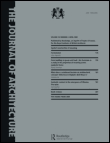
Journal of Architecture
Exploring the intersection of art and engineering in architecture.Journal of Architecture, published by ROUTLEDGE JOURNALS, TAYLOR & FRANCIS LTD, stands as a pivotal platform for scholarly discourse in the ever-evolving field of architecture. Established in 1996, this esteemed journal boasts an impressive impact factor, categorized as Q2 in Architecture and Q1 in Visual Arts and Performing Arts, reflecting its significant contribution to both disciplines. With a robust Scopus ranking positioning it in the 85th percentile among Visual Arts and Performing Arts and the 57th percentile within Engineering Architecture, the journal serves as an essential resource for researchers, professionals, and students alike. The Journal of Architecture features innovative research and thoughtful analysis that shape contemporary architectural practices and theories, encouraging interdisciplinary dialogue. Engaging with this journal allows readers to stay abreast of critical advancements and emerging trends, fostering a deeper understanding of architecture's role in societal transformation.

i2 Investigacion e Innovacion en Arquitectura y Territorio
Advancing knowledge at the intersection of architecture and territory.i2 Investigacion e Innovacion en Arquitectura y Territorio is a leading open-access journal published by the University of Alicante, dedicated to advancing research and innovation in the fields of architecture and territorial development. Since its inception in 2013, this journal has aimed to provide a robust platform for scholarly discourse, promoting interdisciplinary approaches that connect academic insights with practical applications in urban planning and environmental design. With its commitment to accessibility, the journal ensures that cutting-edge findings and case studies are readily available to researchers, professionals, and students alike, fostering collaboration and informed decision-making. As the landscape of architecture and geography continues to evolve, the i2 journal stands out as a crucial resource for enhancing knowledge and cultivating innovative practices in these dynamic fields.
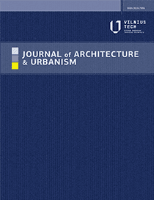
Journal of Architecture and Urbanism
Shaping Tomorrow’s Urban LandscapesThe Journal of Architecture and Urbanism, published by VILNIUS GEDIMINAS TECH UNIV, stands as a pivotal resource for scholars and practitioners in the fields of architecture and urban studies. Since its inception in 2012, the journal has committed to advancing research and discourse on the design, planning, and functionality of urban environments, reflecting a dedicated focus on contemporary challenges in architecture and urbanism. With an impressive open access model implemented since 2018, it ensures that innovative research is accessible to a global audience, fostering collaboration and knowledge exchange. The journal boasts a commendable reputation, categorized in the Q2 quartile for Architecture and Q3 in both Geography, Planning and Development and Urban Studies as of 2023, while maintaining respectable Scopus rankings. Addressing key themes from sustainable design to socio-economic impacts on urban spaces, the journal aims to inspire new models and solutions that meet the evolving needs of growing urban populations. This is a must-read for anyone engaged in the intersection of architecture and urban development.

Design Journal
Unveiling New Horizons in Design ResearchDesign Journal, published by Routledge Journals, Taylor & Francis Ltd, serves as a pivotal platform for interdisciplinary research within the expansive fields of Arts and Humanities as well as Computer Graphics and Computer-Aided Design. With an ISSN of 1460-6925 and an E-ISSN of 1756-3062, this journal is dedicated to disseminating innovative ideas and methodologies that shape contemporary design practices. Ranked in the Q2 category in Arts and Humanities and Q3 in Computer Graphics per the 2023 category quartiles, it stands as a reference point for scholars and practitioners alike, fostering a vibrant community for sharing knowledge and fostering creativity. Researchers will find the journal's scope particularly valuable as it covers a diverse range of topics, providing insights critical for advancing knowledge and practice. With the journal continuing to evolve—converging research avenues from 2005 to 2024—it thrives as a beacon of scholarly excellence in the United Kingdom and beyond, appealing to professionals, researchers, and students eager to engage with cutting-edge design discourse.
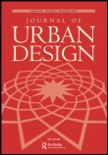
Journal of Urban Design
Pioneering insights into the art and science of urban spaces.Journal of Urban Design, published by Routledge Journals, Taylor & Francis Ltd, stands at the forefront of academia, providing a critical forum for discourse on contemporary urban design practices and theories since its inception in 1996. With an impressive impact factor and consistently ranking in the Q1 category across multiple fields—namely Arts and Humanities, Geography, Planning and Development, and Urban Studies—this journal is recognized for its significant contributions to the understanding and shaping of urban environments. Although it does not offer open access, its meticulously curated content remains accessible to those keen on exploring innovative urban design thinking. Researchers, professionals, and students alike will find valuable insights and methodologies aimed at enhancing urban spaces globally, making the journal a vital resource for those committed to the evolution of urban planning and sustainable development strategies.